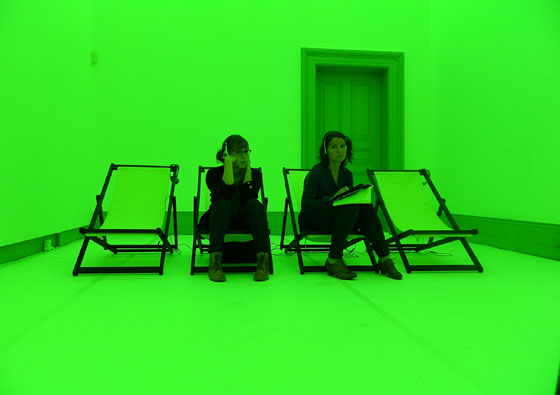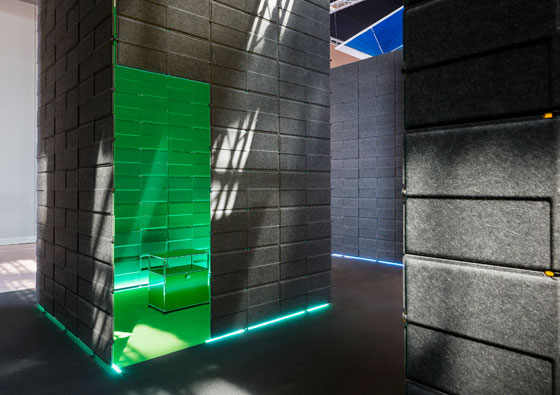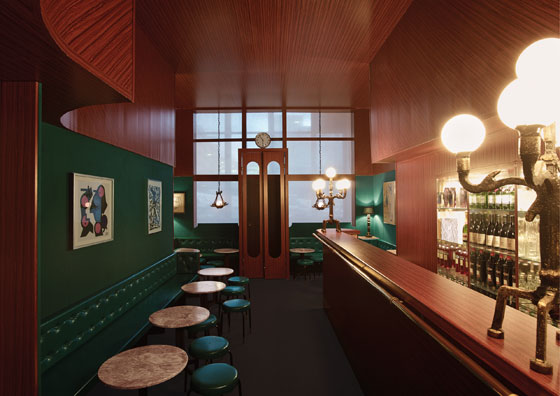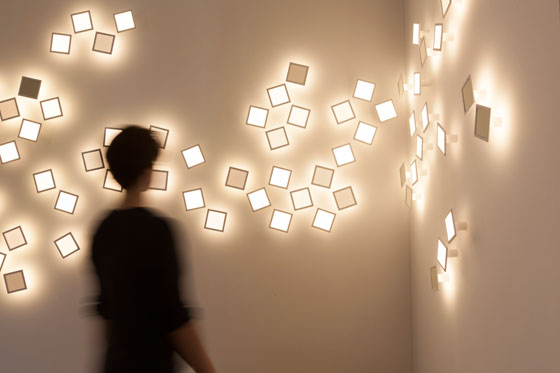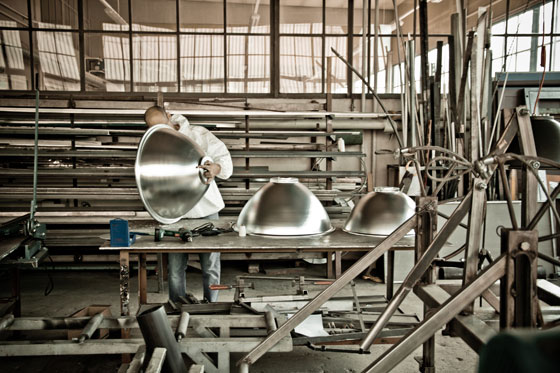Design Prize Switzerland
Texto por Design Preis Schweiz
Langenthal, Suiza
26.08.15
With an enhanced competitive structure and a new category of Product Design Investment Goods, Design Prize Switzerland is responding to recent developments in the design industry. As a result of this tightening up, every discipline now has its own prize category. The industry showed its appreciation of this reform, with 450 entries submitted, out of which 42 have now been nominated. These include world innovations and smart solutions which emphasise the competitiveness of Swiss design.
More than ever before – this year’s edition of Design Prize Switzerland clocked up 450 submitted entries, an increase of 50 percent in comparison with the last time. One reason for this growth is the diversified competitive structure. This reflects the way in which Switzerland, as a centre of craft and industry, increasingly uses design as a holistic approach in the innovation process, with a view to developing solutions which are socially and economically relevant. In the light of this, the enhanced interest in the Design Prize is hardly surprising. Even just a nomination constitutes recognition in the industry.
Working together to get new things moving – together with its industrial partners, Design Prize Switzerland has launched new categories dedicated to specific promotional aspects. One of these is the Sustainable Impact Prize, awarded to energy-efficient lighting solutions and so underlining the theme of sustainability. Another category claiming the limelight is the Rado Star Prize Switzerland for Young Talents. This will be presented for the first time to young designers in all specialist fields, and attracted a great number of entries. Finally, the Swiss Textiles Prize for Young Fashion and Textile Entrepreneurs introduced a new format for supporting the further development of young fashion designers who have already achieved first market success.
Expanded expertise: the internationally prestigious jury, consisting of Jasper Morrison, Robb Young, Lars Müller, Ascan Mergenthaler and Liesbeth in’t Hout, has been reinforced by the addition of Wolfgang K. Meyer-Hayoz, an industrial designer specialising in investment goods – a response to the growth of this market sector.
The jury commended this year’s entries, which add up to an impressive selection of smart marketable products and innovations with future potential. They also paid tribute to the fact that a great many of the manufacturers and designers taking part in the competition not only are committed to ecological materials and energy-saving production methods – they also want to deliver efficiently processed products with a long service life. Finally, the jury underlined the fact that four completely different research projects have been nominated in the Research category. They see this nomination record as indicating that design research is now recognised as being an integral component of the design industry
Here a selection of nominations, all 42 nominated projects can be found at
Appia, a chair collection
Appia embodies the vision of a chair with a positive and contemporary atmosphere. In this collection of the Maxdesign firm, for which the design was created, plastic – the previous main material – has been replaced by aluminium and moulded plywood. The use of aluminium for the base, which is produced by pressure die casting, gives the chair an aura of solidity and value. In combination with the seat and backrest, which are made of wood, this results in a picture that is harmonious all round. The unassuming appearance of the Appia chair, which can be used as a contract or conference chair with equal effectiveness, is owing to an intensive concern with the detail of the design. This shows in the almost invisible coupling of the aluminium frame and the wooden backrest, as well as in the way in which the optional arm rests are holistically integrated with the frame of the chair.
Christoph Jenni (Product Design); in collaboration with: Maxdesign: Massimo Martino (CEO); POL: Chantal Meng, Luca Fuchs (Graphic Design, Photo Concept); Activa: Luigi Cappelin (Engineering)
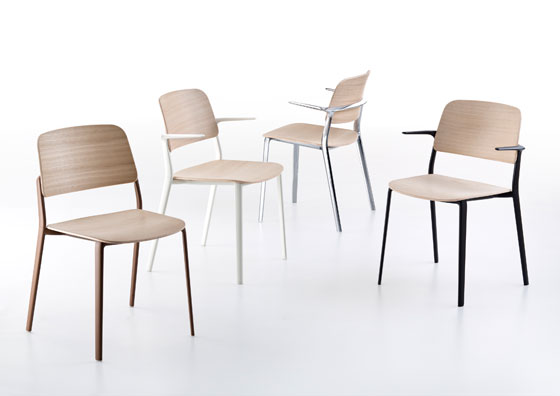
Christoph Jenni (Product Design); in collaboration with: Maxdesign: Massimo Martino (CEO); POL: Chantal Meng, Luca Fuchs (Graphic Design, Photo Concept); Activa: Luigi Cappelin (Engineering)
×USM Privacy Panels
Whatever one may think of the open-plan office, it is a fact of social life. As long as this remains the case, there will be an urgent need for partitions and acoustic systems. The furniture company USM Haller has responded to this situation by developing its USM Privacy Panels –
a flexible modular system for economically creating spatial areas which offer visual and acoustic privacy.
Based on the modular matrix of the classic USM Haller furniture, the individual panels consist of highly compressed polyester fleece which is seamlessly attached to a framework of steel tubes. With these panels as building blocks, it is an easy matter to realise stable spatial arrangements in accordance with whatever is needed. The panels are available in different colours and in two design variants – either as a freestanding space divider, or as a table superstructure for use in combination with the office furniture.
USM U. Schärer Söhne AG in collaboration with atelier oï
Krönlihalle Bar
The bar of the Kronenhalle in Zurich is one of the best known hostelries in Switzerland. Its
legendary reputation is essentially owing to its interior, designed by Trix and Robert Haussmann in 1965. The Krönlihalle Bar was created as a temporary replica of this original, on a scale of 0.85 to 1, in a former lorry garage in Zurich West. The project was designed as a walk-in sculpture, a space within a space and at the same time as a functioning bar. It was intended to be both a tribute to the original designers, and at the same time a whimsical persiflage – this in view of the fact that the Krönlihalle Bar was everything that its predecessor is not, being cheap, trashy and temporary. The replica was realised with cheap materials, which could be recycled when it was dismantled. At its heart the project was a game involving perception through diminution, the use of ‘wrong’ materials and many small changes, in some cases deliberately concealed.
Textbau. Schweizer Architektur zur Diskussion
The exhibition ‘Textbau. Schweizer Architektur zur Diskussion’ [‘Text Building – a Discussion of Swiss Architecture’] at the Swiss Architecture Museum (SAM) in Basel investigated the relevance of text as a medium of architecture, and reflected public debate and published discussion of building in the light of selected projects. The scenographic challenge here consisted in the absence of classic exhibits such as models, plans and pictures. The presentation finally realised drew inspiration from the white of the paper, the black of printer’s ink, the medium of the newspaper and the act of reading itself. The central exhibition room came across as a mixture of waiting room, reading room and lounge. Whereas the floor, ceiling and walls were all a brilliant white, the viewer’s attention was drawn to the print layouts (blurred to the point of illegibility) and enlarged black and white photographs on the walls. Black, hard-carpentered wooden seats alternated with piles of newspapers, inviting visitors to get to grips with the texts.
Holzer Kobler Architekturen GmbH: Tristan Kobler, Laura Murbach, Ingo Böhler; order by: S AM Swiss Architecture Museum
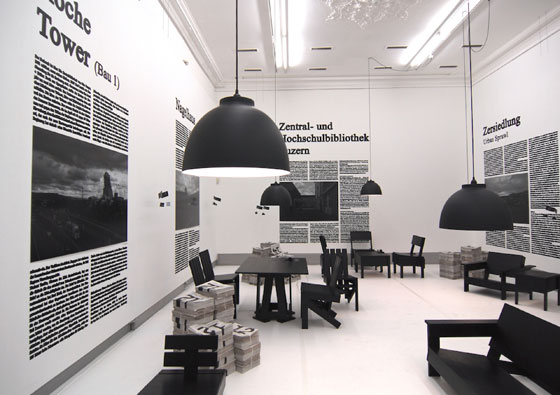
Holzer Kobler Architekturen GmbH: Tristan Kobler, Laura Murbach, Ingo Böhler; order by: S AM Swiss Architecture Museum
×Lautsprecher L242
The exclusive L242 loudspeaker, which is being produced in limited quantity, is notable for its striking and at the same time eloquent design. This advertises, even just in visual terms, its function as a sounding box. It is inspired by the folle, an archaic funnel-shaped speaking trumpet which is used in some regions of the Alps to call out the traditional Alpine blessing. The body of the L242 is made of fibre cement, which in view of its cement component has outstanding damping properties and so forms the basis for a clean acoustic pattern. The craft processing of this material leaves traces on the surface, giving every loudspeaker the character of a unique creation. The special optic quality of the fibre cement and careful design of the object, which looks good in all perspectives, are aimed at making the loudspeaker an attractive accessory in many different domestic settings.
estragon (Design): Dirk Fleischhut, André Lüthy, Fernando Cruz; VONSCHLOO (Producer); in Collaboration with: Eternit (Schweiz) AG
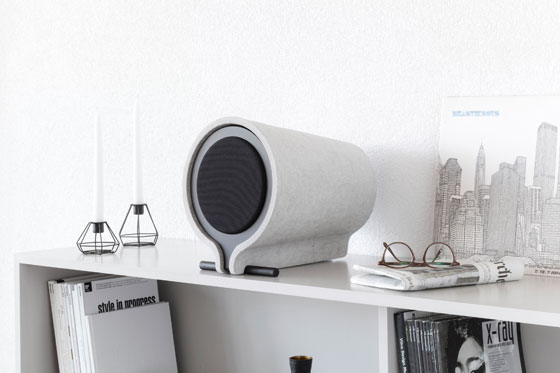
estragon (Design): Dirk Fleischhut, André Lüthy, Fernando Cruz; VONSCHLOO (Producer); in Collaboration with: Eternit (Schweiz) AG
×Metal Base Kollektion
Façades with extensive areas of glass have been part of the formal repertoire of modern and contemporary architecture for decades. This gives rise to interiors where an abundance of natural light enters by way of the large window openings. These naturally call for measures whereby the input of light and heat can be regulated. This was the background to the development and launch of Création Baumann’s Metal Base Collection. It consists in highly functional curtain materials for windows, which serve as blinds and glare shields as well as keeping out heat and ultraviolet radiation. The effect is achieved through a special high-tech method which metallises the textiles with a choice of metals – brass, copper, aluminium or steel may be used. The materials of the Metal Base Collection are not only superlatively functional – their simple nobility and elegance are likewise impressive, making them equally suitable for use in the contract sector or in a private and domestic setting.
Création Baumann AG, Langenthal; Designteam: Eliane Ernst, Christian Brunner, Mario Klaus, Sibylle Aeberhard, Geneviève Hirt, Brigitte Signer, Katharina Schäfer
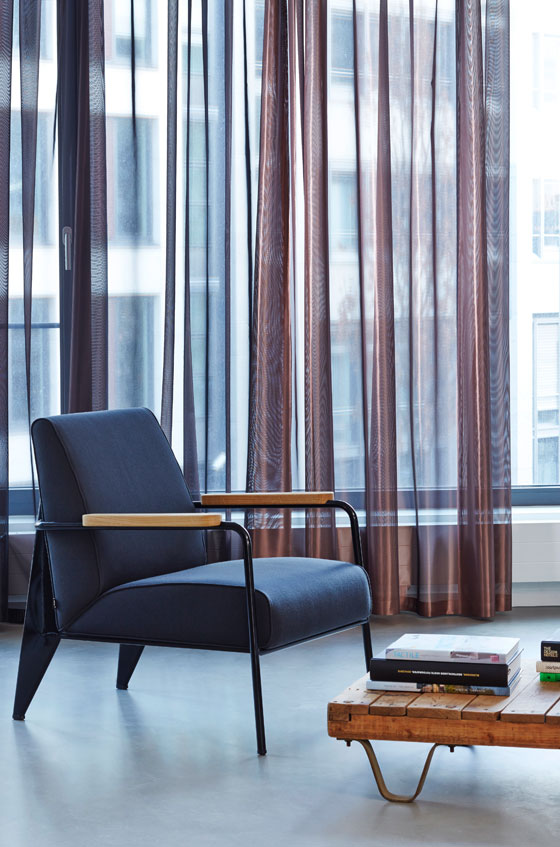
Création Baumann AG, Langenthal; Designteam: Eliane Ernst, Christian Brunner, Mario Klaus, Sibylle Aeberhard, Geneviève Hirt, Brigitte Signer, Katharina Schäfer
×Ampoules LMP
Turning the lamp into a luminaire – or to put it differently, finding the perfect marriage of the light source and the luminaire body – is an idea that easily suggests itself, and one that has already concerned designers for decades. The solution has now been found. In view of modern LED technology, with its long service life and energy efficiency, it is a project of particular topicality today – all the more so considering that LED light, by contrast with traditional forms of light technology, is not bound to a specific form like that of the light bulb.
The present project – a genuine innovation – accordingly involves variously shaped fluorescent screens made of milky compressed glass with an integrated LED module. These, just like traditional light bulbs, can be screwed directly into a light fitting. Ampoule LMP comes across as the fusion of a lamp and an atmospherically appealing luminaire body. The resulting product is an object of interest, not least in view of its sustainable and economic potential.
Renaud Defrancesco, ECAL / University of Art and Design Lausanne; Tutors: Jörg Boner, Camille Blin, Elric Petit
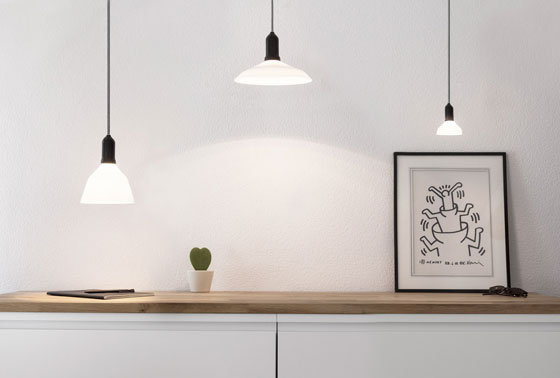
Renaud Defrancesco, ECAL / University of Art and Design Lausanne; Tutors: Jörg Boner, Camille Blin, Elric Petit
×OLED Design Lab
OLEDs are flat sources of light. The light they emanate is characteristically diffuse but at the same time bright, with good colour reproduction, and along with the LED they are seen, in view of their energy efficiency, as being the luminaires of the future. Under the auspices of a KTI-sponsored research project, the OLED Design Lab has been investigating the design and technical potential of this new technology which is now approaching its market launch, using the OLED modules currently available (Philipps Lumiblade) as a basis. The goal was the prototype development of consumer lamps and lighting systems which are consistently geared to the special features and advantages of the OLED. This resulted in trailblazing solutions, suggested on the one hand by the thinness and lightness of the OLED units, and on the other by the possibility of digital controls and their system-forming potential. Interactive light installations and lamps illustrate what kinds of role may soon be open to OLEDs, in the field of scenography or interior lighting.
R2D2 LED White Dimming + App
The R2D2 is a hanging lamp using LED light, which can be controlled, operated and programmed by means of a specially developed Smartphone app. The app makes it possible to adjust both the light temperature and the intensity of the light. With the help of LED technology, the light temperature is continuously variable and ranges from 2700 Kelvin (warm white) to 6500 Kelvin (daylight white). The app also gives you information about the energy consumption of the lamp and the resulting electricity costs. The form of the lamp is inspired by a classic industrial lamp. Its demonstrative simplicity means that it can be used in a wide variety of contexts – either in a domestic setting or in the office. In keeping with this, the aluminium lamp body is obtainable in different sizes and colour variants.
Nominated in the category „Sustainable Impact Prize“: ATELIER R2D2, Xavier Aymon
